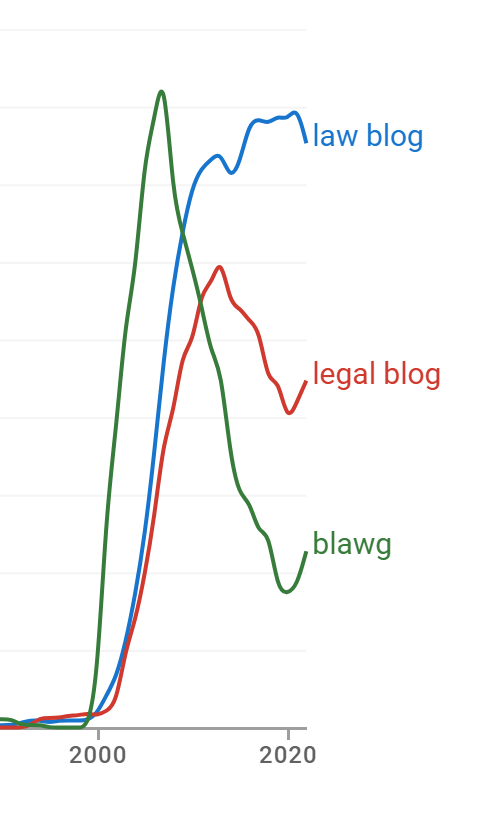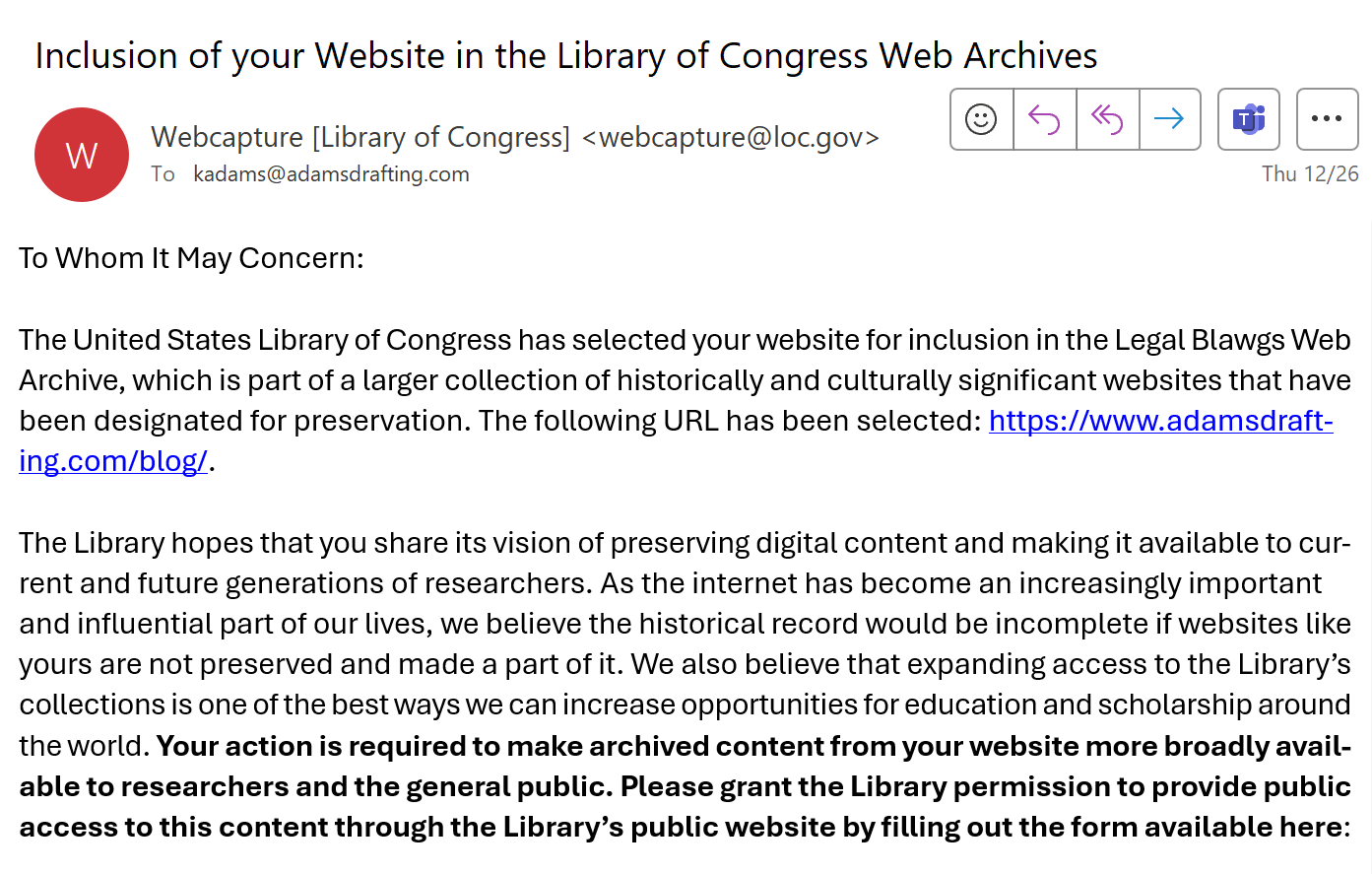
A few days ago, I received an email from the Library of Congress. Here’s the opening sentence: “The United States Library of Congress has selected your website for inclusion in the Legal Blawgs Web Archive, which is part of a larger collection of historically and culturally significant websites that have been designated for preservation.” (The image at the bottom of this post contains the first two paragraphs of that email, in case anyone’s intereted.)
It’s nice to have one’s work recognized, and I’m all for saving for posterity parts of the web. But mostly, that email served as a blast from the past.
The phrase legal blawg is tautologous, given that blawg is a mashup of blog and law. As regards the word blawg, I last paid attention to it in 2015, when this blog was named to the hall of fame of the ABA Journal’s “Blawg 100”. An Ngram chart (see the image below) shows that the steep rise of blawg is matched by its steep decline. I can’t imagine anyone seriously using the word blawg these days.

But broader issues comes to mind.
There are still law blogs out there. I noticed that Eric Goldman’s Technology & Marketing Law Blog is still going strong, twenty years in. And people are launching new law blogs: one newcomer is A Brief Review: A Connecticut Appellate Law Blog. And I have two blogs—this one and the Adams Contracts blog. But I have the sense that many law blogs have fallen by the wayside—I’d be interested to see what proportion of blogs named over the years to the ABA Journal’s Blawg 100 are still active. I have no idea what the answer is. For a period in the aughts, having a law blog was enough of a novelty that you checked out other people’s law blogs, even if they had no bearing on your topic, and met for drinks with other law bloggers. Nowadays, I consult commentary of any sort only if it has a bearing on my work.
And more generally, blogging long ago stopped being the primary vehicle for disseminating, or commenting on, views online. Nowadays, we have other, broader forms forms of social media, and we also use other labels (such as Substack) for sites that allow one to engage in what is in effect is blogging.
So when it comes to law blogs as a distinct category, the Library of Congress’s email puts me in mind of ornithologists scrambling to bag a dodo to taxidermize before they went extinct. (I’m joking. Sort of.)
Below is an image of part of the email I received from the Library of Congress.


First, congratulations!!!
Second, reading this took me straight back to another aughts reference: Bob Loblaw’s Law Blog (Lobbing Law Bombs), for the Arrested Development lovers out there.
🙂
The photo is from 1893. https://www.biodiversitylibrary.org/item/62388#page/330/mode/1up
Thank you!
I am a fellow Blawg 100 author (2015 & 2016), still blogging enthusiastically. I don’t think legal blogging is going the way of the dodo. People go online to find answers or ideas. Legal blogs supply them. There may be more options nowadays, but a trusted legal blog is valuable.
Hi. I too am not going anywhere. My point was annoyingly narrow, just to give me something to say: I was referring to law blogs as a distinct category, as opposed to law commentary generally.
Great article – kudos on your inclusion. Speaking of keeping up with the times, I appreciate your site’s RSS feed. I did some sleuthing re: the dodo image, and you’re probably fine: Google Images connected the dodo image to https://www.nytimes.com/2024/09/20/science/archaeology-dodo-extinction.html, which credited “Chronicle/Alamy.” (Alamy is a stock photo site.) Other stock photo sites credit the “Mary Evans Picture Library.” That site (https://www.maryevans.com/search.php?prv=preview&job=5877433&itm=14&pic=10039518&row=3) credits as the source “unnamed artist in Hutchinson ‘Extinct Monsters’ (1910) page 221.”
Sounds like the original photo is in the public domain. Keep up the good work!
Thank you, Josh, for your detective work!
Congratulations! First, the Smithsonian. To come: Mt. Rushmore!